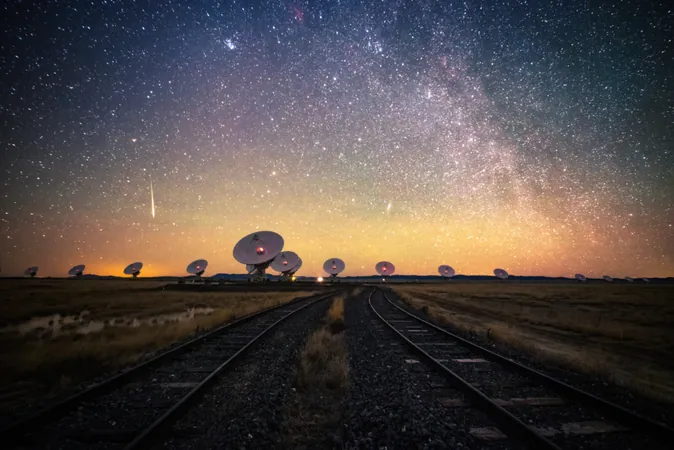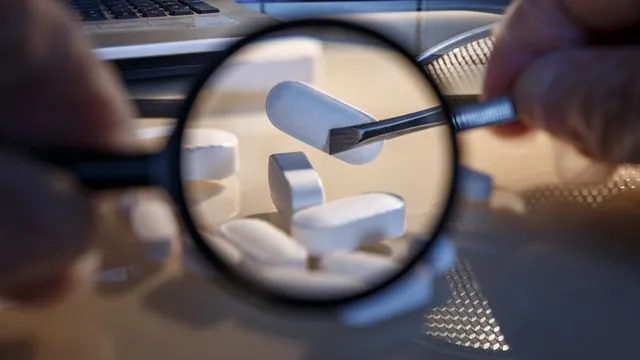
Revolutionary System Merges Satellite Internet with Radio Astronomy
2025-08-12
Author: Daniel
A Breakthrough for Radio Astronomy
In an exciting development for both satellite internet and space science, researchers from the U.S. National Science Foundation's National Radio Astronomy Observatory (NSF NRAO) have partnered with SpaceX to create the Operational Data Sharing (ODS) system. This cutting-edge framework aims to tackle the increasing radio interference from satellite constellations that threatens delicate radio astronomy observations.
The Challenge of Low Earth Orbit Satellites
Low Earth Orbit (LEO) satellite networks, like SpaceX's Starlink, are transforming global internet access, particularly in hard-to-reach areas. However, as these satellites proliferate—expected to multiply tenfold in the next decade—they pose a significant challenge. Their signals often disrupt the sensitive operations of radio telescopes, which are highly vulnerable to Radio Frequency Interference (RFI) from modern technology.
Introducing the ODS System
The ODS system facilitates near real-time communication between radio observatories and satellite operators. By sharing telescope operational data through a secure database, this technology empowers satellites to adjust their transmissions dynamically, thus minimizing potential interference.
SpaceX's Innovative Technique
A standout feature of the ODS system is SpaceX’s Telescope Boresight Avoidance (TBA) technique. This allows satellites equipped with advanced phased array antennas to redirect their signals away from telescopes in close proximity and temporarily halt transmissions that might obstruct a telescope’s line of sight.
Promising Preliminary Results
Initial tests with Starlink satellites have yielded promising results, showing a marked reduction in interference during observations at the NSF Very Large Array (NSF VLA) in New Mexico. Since launching the ODS system in 2024, interference in critical frequency bands has significantly decreased. SpaceX has already integrated ODS into its operations, and several observatories globally, including some in Australia and California, are beginning to follow suit.
Looking Ahead: A Universal Solution?
The NSF NRAO has plans to broaden ODS coverage to additional crucial facilities, such as the NSF Green Bank Telescope (NSF GBT)—the world’s largest steerable radio telescope—and the NSF Very Long Baseline Array (NSF VLBA). This scalable system holds the potential to establish a universal platform for spectrum sharing among observatories and satellite operators worldwide.
A Collaborative Future
This collaboration exemplifies how innovative solutions can align technological advancements with scientific inquiry. As Bang Nhan, a lead scientist at NSF NRAO, stated, “The ODS system showcases that cooperation between industries can lead to mutually beneficial outcomes.” There's optimism that this framework could evolve into a global standard for spectrum coexistence.
Protecting Our Pursuit of Knowledge
As satellite networks expand, systems like ODS will become vital in preserving the integrity of humanity’s quest for knowledge—be it through enhanced connectivity or deeper exploration of the universe. The NSF and NRAO are eager to engage with more satellite communication providers to promote shared spectrum usage and safeguard astronomical research.




 Brasil (PT)
Brasil (PT)
 Canada (EN)
Canada (EN)
 Chile (ES)
Chile (ES)
 Česko (CS)
Česko (CS)
 대한민국 (KO)
대한민국 (KO)
 España (ES)
España (ES)
 France (FR)
France (FR)
 Hong Kong (EN)
Hong Kong (EN)
 Italia (IT)
Italia (IT)
 日本 (JA)
日本 (JA)
 Magyarország (HU)
Magyarország (HU)
 Norge (NO)
Norge (NO)
 Polska (PL)
Polska (PL)
 Schweiz (DE)
Schweiz (DE)
 Singapore (EN)
Singapore (EN)
 Sverige (SV)
Sverige (SV)
 Suomi (FI)
Suomi (FI)
 Türkiye (TR)
Türkiye (TR)
 الإمارات العربية المتحدة (AR)
الإمارات العربية المتحدة (AR)